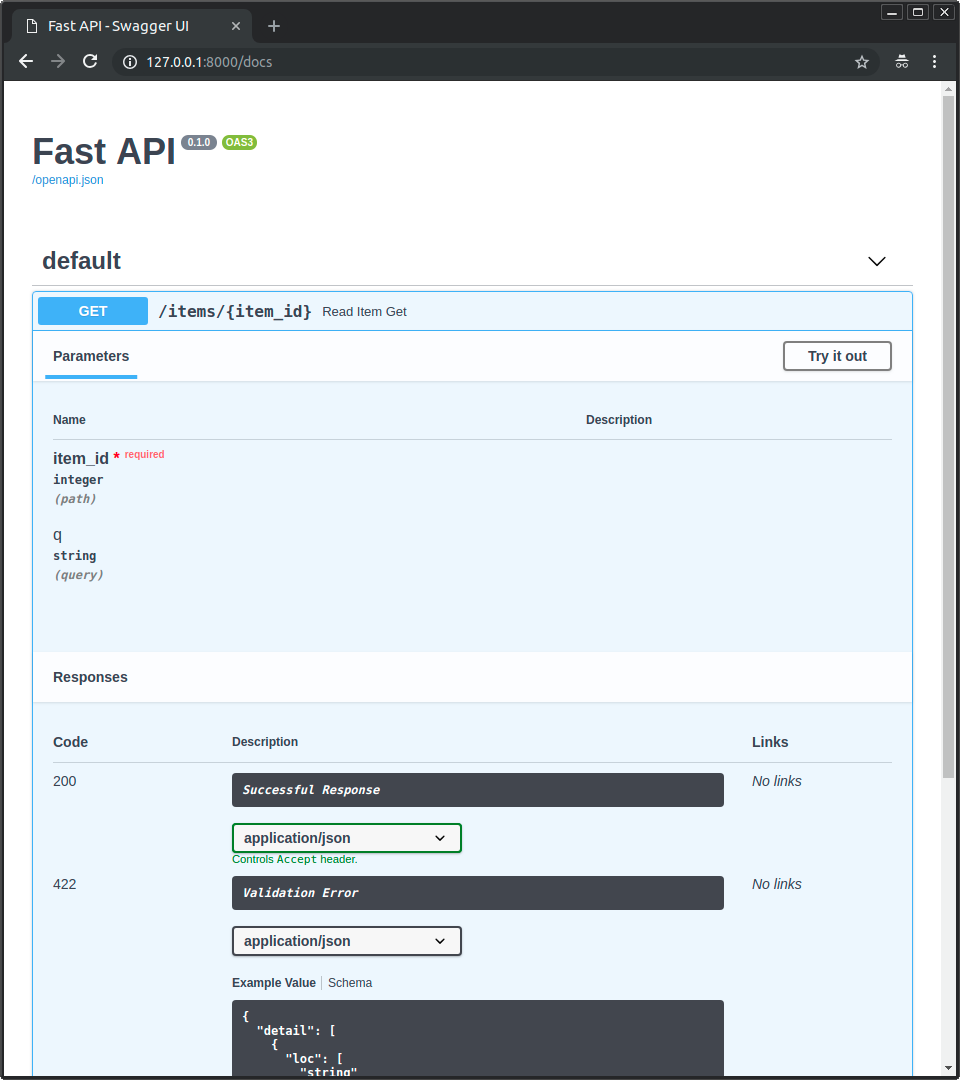- Sort Score
- Result 10 results
- Languages All
Results 1 - 10 of 92 for by (0.34 sec)
-
docs/en/docs/benchmarks.md
But when checking benchmarks and comparisons you should keep the following in mind. ## Benchmarks and speed When you check the benchmarks, it is common to see several tools of different types compared as equivalent. Specifically, to see Uvicorn, Starlette and FastAPI compared together (among many other tools).
Plain Text - Registered: Sun May 05 07:19:11 GMT 2024 - Last Modified: Thu Apr 18 19:53:19 GMT 2024 - 3.4K bytes - Viewed (0) -
docs/en/docs/alternatives.md
Plain Text - Registered: Sun May 05 07:19:11 GMT 2024 - Last Modified: Thu Apr 18 19:53:19 GMT 2024 - 23.2K bytes - Viewed (0) -
fastapi/security/oauth2.py
Python - Registered: Sun May 05 07:19:11 GMT 2024 - Last Modified: Tue Apr 02 02:48:51 GMT 2024 - 21.1K bytes - Viewed (1) -
docs/en/docs/advanced/behind-a-proxy.md
# Behind a Proxy In some situations, you might need to use a **proxy** server like Traefik or Nginx with a configuration that adds an extra path prefix that is not seen by your application. In these cases you can use `root_path` to configure your application. The `root_path` is a mechanism provided by the ASGI specification (that FastAPI is built on, through Starlette). The `root_path` is used to handle these specific cases.
Plain Text - Registered: Sun May 05 07:19:11 GMT 2024 - Last Modified: Thu May 02 22:37:31 GMT 2024 - 11.6K bytes - Viewed (2) -
fastapi/param_functions.py
] = None, *, use_cache: Annotated[ bool, Doc( """ By default, after a dependency is called the first time in a request, if the dependency is declared again for the rest of the request (for example if the dependency is needed by several dependencies), the value will be re-used for the rest of the request.Python - Registered: Sun May 05 07:19:11 GMT 2024 - Last Modified: Thu Apr 18 19:40:57 GMT 2024 - 62.5K bytes - Viewed (0) -
docs/en/docs/tutorial/response-model.md
* Add a **JSON Schema** for the response, in the OpenAPI *path operation*. * This will be used by the **automatic docs**. * It will also be used by automatic client code generation tools. But most importantly: * It will **limit and filter** the output data to what is defined in the return type.Plain Text - Registered: Sun May 05 07:19:11 GMT 2024 - Last Modified: Thu Apr 18 19:53:19 GMT 2024 - 17.9K bytes - Viewed (0) -
docs/en/docs/tutorial/path-params.md
# Path Parameters You can declare path "parameters" or "variables" with the same syntax used by Python format strings: ```Python hl_lines="6-7" {!../../../docs_src/path_params/tutorial001.py!} ``` The value of the path parameter `item_id` will be passed to your function as the argument `item_id`.
Plain Text - Registered: Sun May 05 07:19:11 GMT 2024 - Last Modified: Fri Mar 22 01:42:11 GMT 2024 - 9.1K bytes - Viewed (0) -
fastapi/security/http.py
class HTTPAuthorizationCredentials(BaseModel): """ The HTTP authorization credentials in the result of using `HTTPBearer` or `HTTPDigest` in a dependency. The HTTP authorization header value is split by the first space. The first part is the `scheme`, the second part is the `credentials`. For example, in an HTTP Bearer token scheme, the client will send a header like: ```
Python - Registered: Sun May 05 07:19:11 GMT 2024 - Last Modified: Fri Apr 19 15:29:38 GMT 2024 - 13.2K bytes - Viewed (0) -
docs/en/docs/tutorial/first-steps.md
``` ### Interactive API docs Now go to <a href="http://127.0.0.1:8000/docs" class="external-link" target="_blank">http://127.0.0.1:8000/docs</a>. You will see the automatic interactive API documentation (provided by <a href="https://github.com/swagger-api/swagger-ui" class="external-link" target="_blank">Swagger UI</a>):  ### Alternative API docs
Plain Text - Registered: Sun May 05 07:19:11 GMT 2024 - Last Modified: Thu May 02 22:37:31 GMT 2024 - 12K bytes - Viewed (0) -
tests/test_tutorial/test_dependencies/test_tutorial008d_an.py
with pytest.raises(InternalError) as exc_info: client.get("/items/portal-gun") assert ( exc_info.value.args[0] == "The portal gun is too dangerous to be owned by Rick" ) def test_internal_server_error(): from docs_src.dependencies.tutorial008d_an import app client = TestClient(app, raise_server_exceptions=False) response = client.get("/items/portal-gun")Python - Registered: Sun Apr 28 07:19:10 GMT 2024 - Last Modified: Sat Feb 24 23:06:37 GMT 2024 - 1.2K bytes - Viewed (0)